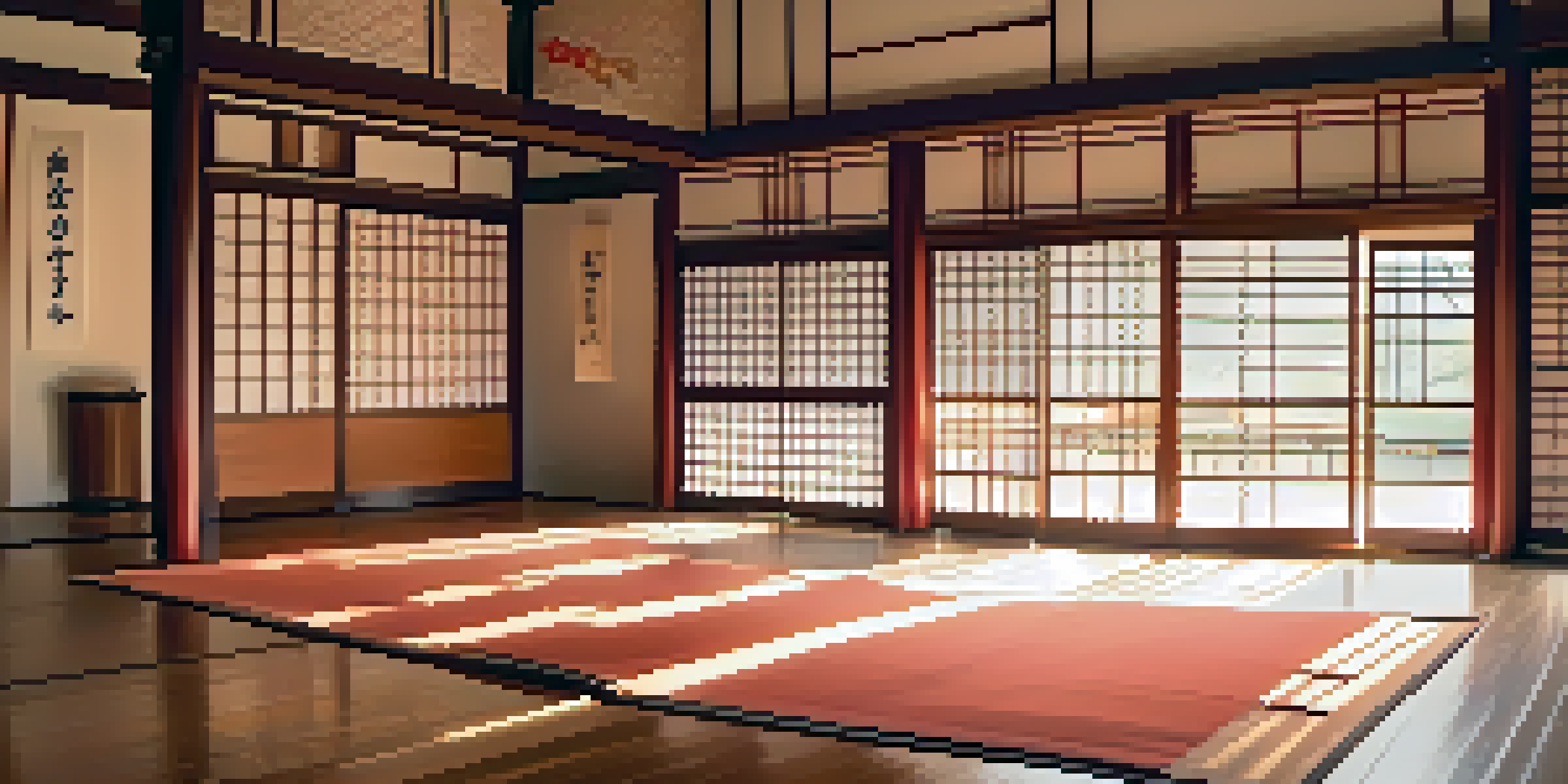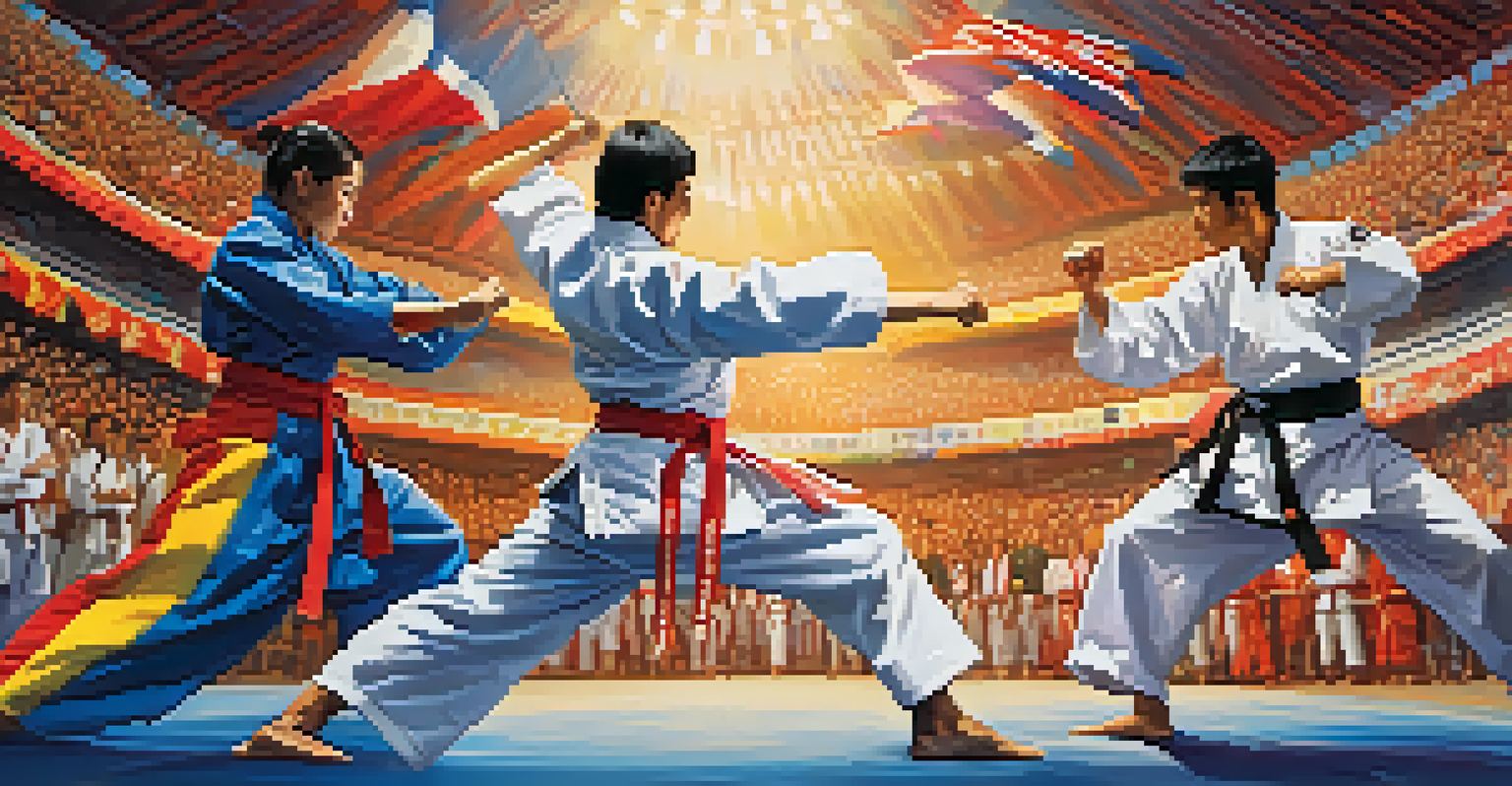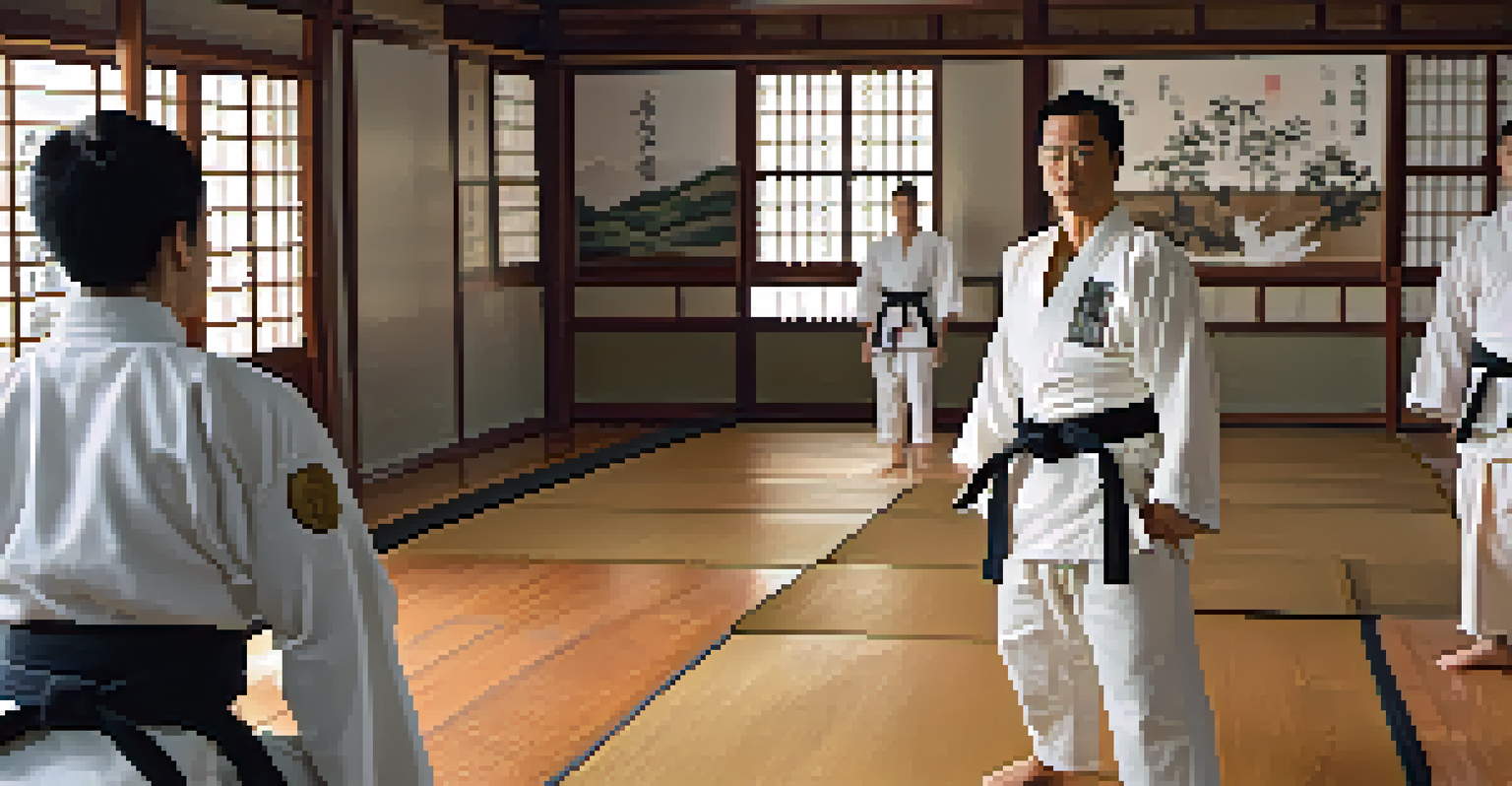Martial Arts Training: A Platform for Cultural Dialogue

Understanding the Roots of Martial Arts
Martial arts are not just physical disciplines; they are rich in history and culture. Each style often reflects the traditions and values of the region from which it originated. For instance, Brazilian Jiu-Jitsu emphasizes leverage and technique, showcasing Brazilian ingenuity, while Karate highlights discipline and respect from its Japanese roots.
Martial arts is not about the opponent; it's about the journey of self-discovery.
This historical context allows practitioners to appreciate not only the movements but also the cultural narratives that accompany them. By understanding the origins, students can connect with the broader philosophies of the martial art, fostering a deeper respect for its cultural significance. This connection can lead to meaningful discussions about heritage and identity.
Moreover, as practitioners from various backgrounds come together in training, they engage in a shared learning experience. This cooperation paves the way for meaningful cultural exchanges, making martial arts a unique platform for dialogue.
Martial Arts as a Universal Language
One of the remarkable aspects of martial arts is its ability to transcend language barriers. When individuals from different cultures step onto the mat, they communicate through shared movements and techniques, creating a bond that goes beyond words. This physicality can become a powerful form of dialogue, where respect and understanding are conveyed through practice.

For example, during a sparring session, a practitioner learns to read their partner’s body language, fostering a mutual respect that is often absent in verbal communication. This form of dialogue encourages empathy and connection, as students learn to appreciate each other’s strengths and vulnerabilities.
Cultural Roots Shape Martial Arts
Understanding the historical and cultural origins of martial arts fosters a deeper appreciation and respect for its practices.
In this way, martial arts cultivates a sense of community, uniting diverse individuals under a common goal of growth and mastery. This shared journey not only enhances physical skills but also promotes cultural understanding and acceptance.
Promoting Respect and Discipline
At the heart of martial arts training is the emphasis on respect and discipline. Practitioners are taught to respect their instructors, fellow students, and the traditions of the art itself. This foundational principle encourages dialogue about values that transcend individual cultures, fostering mutual respect among practitioners.
The essence of martial arts is not in the victory but in the respect for the opponent and the discipline in training.
For instance, bowing before and after training is a common practice in many martial arts, symbolizing respect for the art and those who practice it. Such rituals instill a sense of community and shared purpose, prompting discussions about the importance of respect in various cultures.
As students learn these principles, they not only become better martial artists but also more culturally aware individuals. This growth encourages them to carry these values into their everyday interactions, furthering the dialogue about respect and discipline in a global context.
Cultural Exchange Through Competitions
Competitions are another significant aspect of martial arts that promote cultural dialogue. Events often attract participants from around the world, showcasing diverse styles and techniques. This melting pot of cultures creates opportunities for exchange and learning, as athletes share their unique approaches and philosophies.
For example, during an international tournament, a Taekwondo practitioner may encounter a Kung Fu expert. As they compete, they not only test their skills but also gain insights into each other’s cultural backgrounds. These experiences can lead to friendships that bridge cultural divides and encourage ongoing dialogue.
Martial Arts Foster Global Community
Through shared experiences on the mat, martial arts create connections that transcend language and cultural barriers.
Furthermore, these competitions often include seminars and workshops, allowing participants to learn from one another. This collaborative environment nurtures a spirit of camaraderie, making martial arts not just a sport but a global community rich in cultural exchange.
The Role of Instructors in Cultural Dialogue
Instructors play a pivotal role in facilitating cultural dialogue within martial arts training. They are often the bridge between different cultures, sharing their knowledge and experiences while encouraging students to explore the cultural contexts of their martial arts. This mentorship fosters an environment where questions and discussions about cultural differences can flourish.
For instance, a teacher might share stories about their own journey in martial arts, including the challenges and triumphs faced along the way. Such narratives not only enrich the training experience but also provide students with a broader perspective on the diverse paths within martial arts.
By encouraging open dialogue, instructors help create a safe space for students to share their own cultural backgrounds and experiences. This exchange promotes understanding and respect, allowing students to appreciate the rich tapestry of cultures represented within the martial arts community.
The Impact of Martial Arts on Global Understanding
Martial arts have the potential to play a significant role in fostering global understanding and peace. As practitioners engage with individuals from diverse backgrounds, they learn to appreciate different perspectives and cultures. This exposure can lead to the breaking down of stereotypes and prejudices that often divide people.
For instance, a member of a martial arts dojo may initially have preconceived notions about another culture. However, through training alongside practitioners from that culture, they gain firsthand experience that challenges their assumptions. This process of learning and growth can foster friendships that transcend cultural boundaries.
Instructors Promote Cultural Dialogue
Instructors play a crucial role in bridging cultural gaps by encouraging discussions and sharing personal narratives within martial arts training.
Ultimately, martial arts can serve as a model for how dialogue and understanding can be achieved in a world that often feels divided. The values of respect, discipline, and community inherent in martial arts training can inspire individuals to seek common ground and promote peace globally.
Future of Cultural Dialogue in Martial Arts
As martial arts continue to evolve, the potential for cultural dialogue within the community remains vast. With the rise of social media and global connectivity, practitioners can now share their experiences and insights with a wider audience than ever before. This digital landscape offers a platform for ongoing conversations about cultural understanding.
Moreover, the emergence of mixed martial arts (MMA) has introduced an even broader array of techniques and philosophies from various cultures. This convergence encourages practitioners to explore and appreciate the diversity within martial arts, further enhancing cultural dialogue.

Looking ahead, the future of martial arts training will likely see increased collaboration and exchange among practitioners worldwide. By embracing this potential, martial arts can continue to serve as a powerful tool for cultural dialogue and understanding, enriching the lives of those who participate.